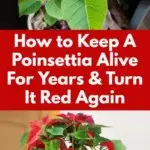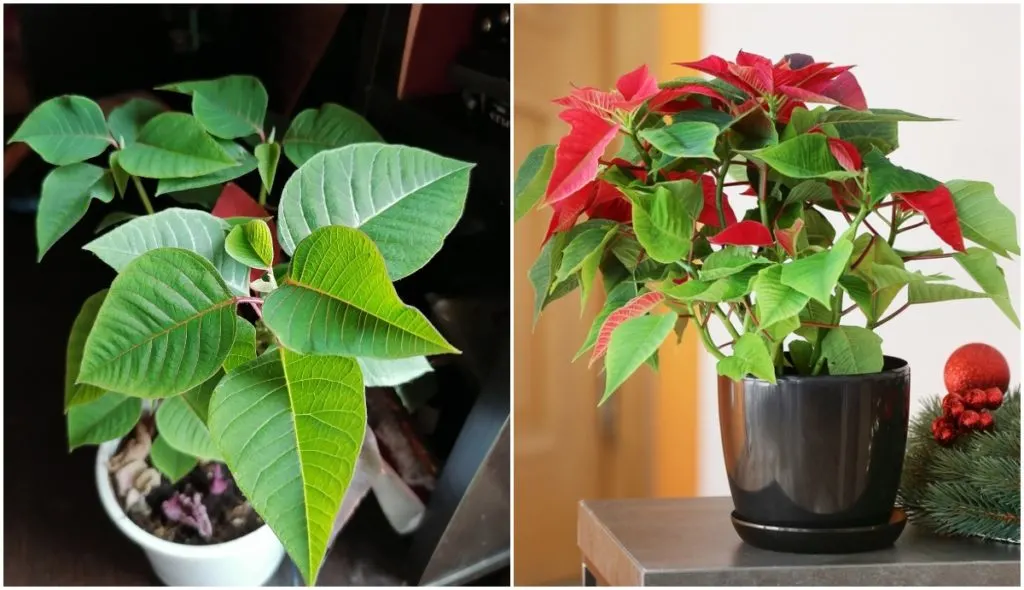
Every year more than 35 million poinsettias are purchased over the holidays.
This number makes up nearly a quarter of all potted plants purchased every year. That’s a lot of plants, especially when you consider that most of them will end up getting thrown out.
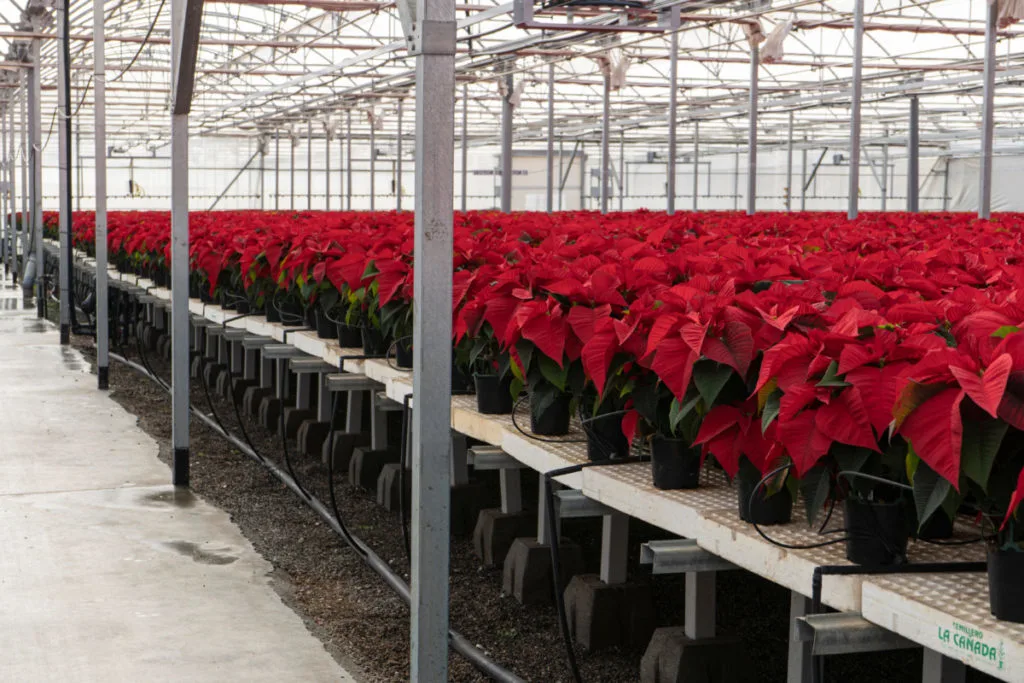
Come New Year’s Day, are you ready to pitch your poinsettia?
By January, most folks end up with a pot full of twigs and a layer of crunchy, faded leaves. These plants are nearly always disposed of, but they don’t need to be.
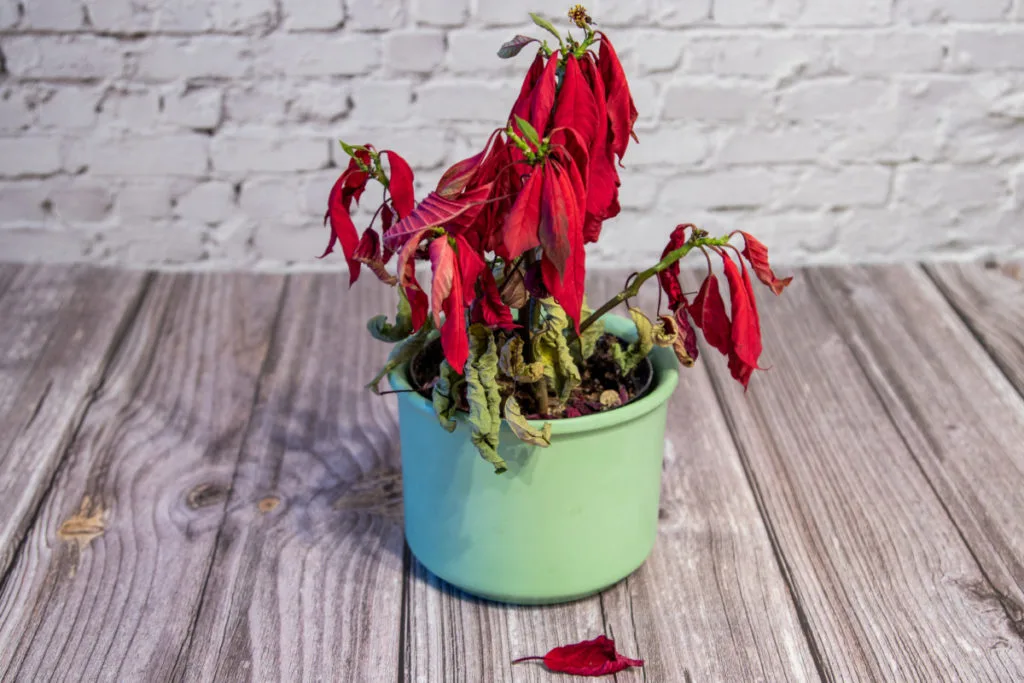
Poinsettias are actually quite easy to care for after the holidays, and with a little extra effort next fall, you can enjoy their crimson leaves every December.
Read on to learn how to keep your poinsettia healthy and putting out new growth for the rest of the year. Plus, I’ll show you how to get that gorgeous red color again next Christmas.
Related Reading: 22 Things Every Poinsettia Owner Needs To Know
Poinsettia ‘Blooms’
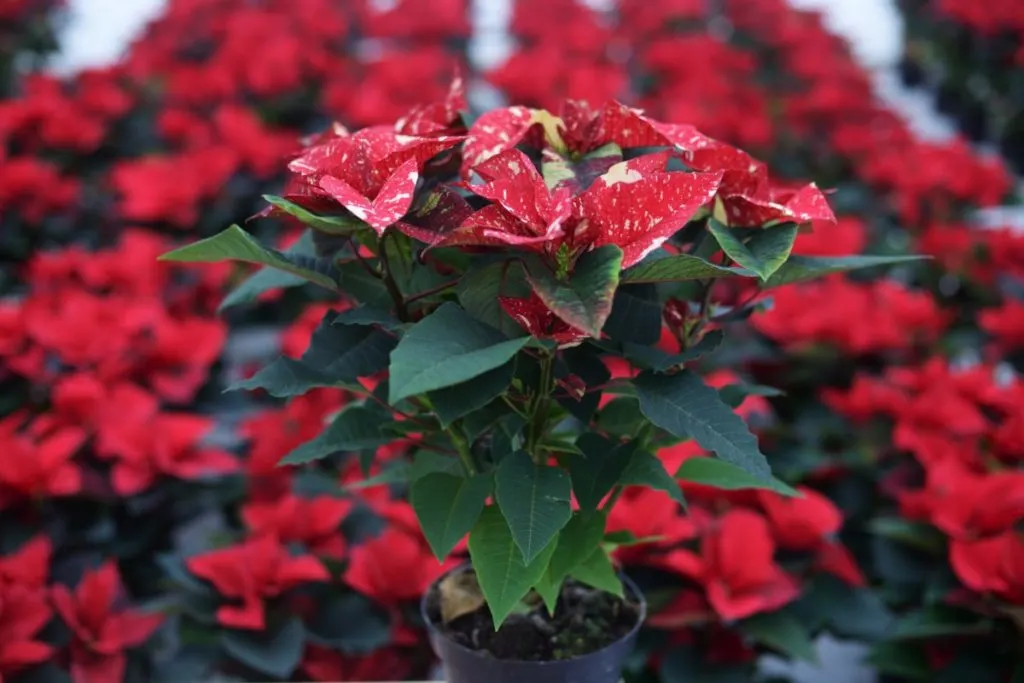
The first thing we need to talk about is the part of the plant that turns red. We often assume these red leaves are flowers and refer to them as blooms. The colorful leaves on the plant are actually called bracts and are not the flower.
When it comes to plants, bracts are specialized leaves, different from the rest of a plant. They can be a different shape or color; they can even be larger or smaller than the other leaves. Bracts usually play a role in attracting pollinators to the plant.
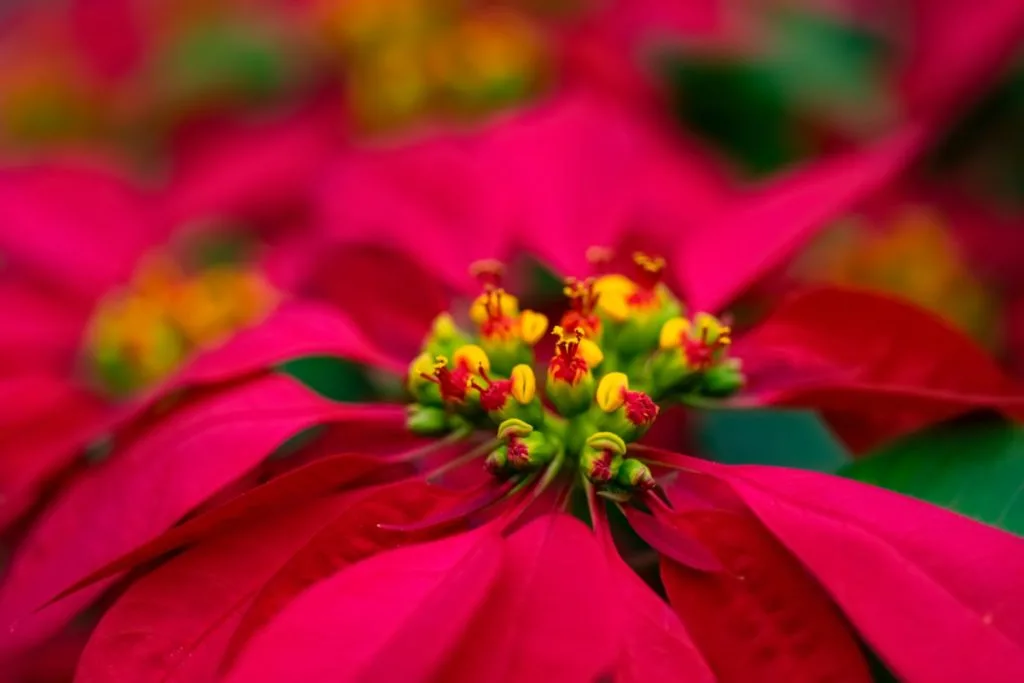
If you look in the center of a bract cluster on a poinsettia, you’ll find the actual yellow and red flowers.
And they’re tiny!
The brightly colored bracts help to attract pollinators to the little flowers. But it’s these showy red leaves that make poinsettias so popular at Christmas.
Like most flowering plants, poinsettias will drop their showy foliage after a while. This is completely normal. By the time the holidays are over, your poinsettia might not have any leaves at all. It’s about this time that most folks pitch their plants.
But wait, if you’ve kept your poinsettia alive this long, you can keep it growing and producing show-stopping foliage for years to come.
Post-Holiday Poinsettia Care
Your job is pretty easy after the holidays – water sparingly and let the plant go dormant until springtime.
At the end of April, you will need to prune back the plant so that it’s about 6” tall.
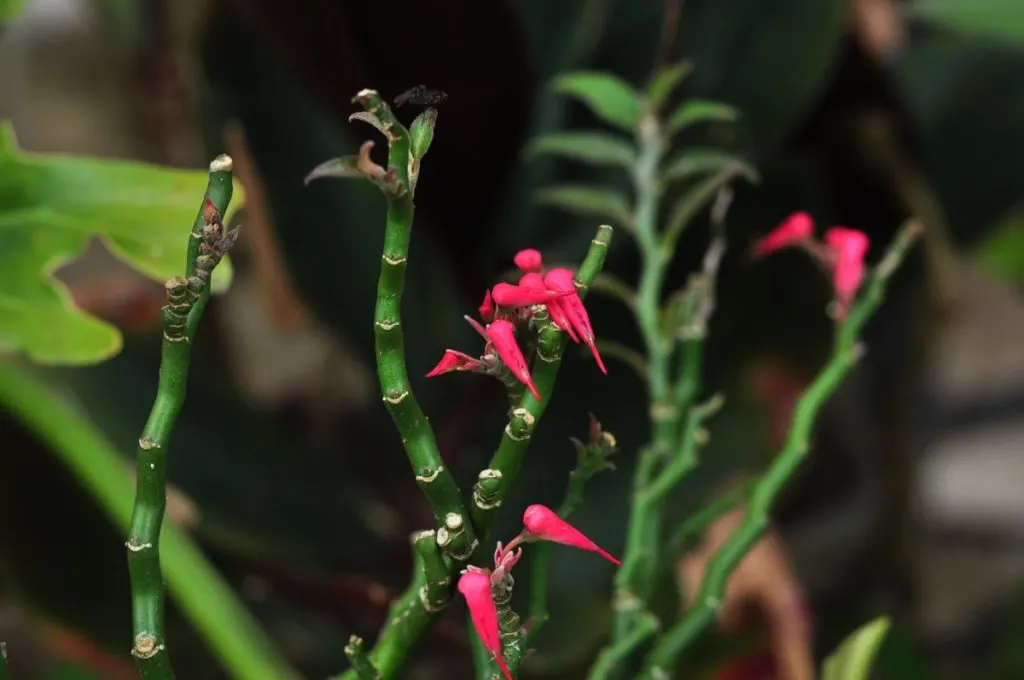
This is also a good time to repot your poinsettia into something nicer than the nursery pot it came in. Use quality, well-draining soil and a pot with a drainage hole. Make sure the new pot is no more than 2” bigger than the previous pot.
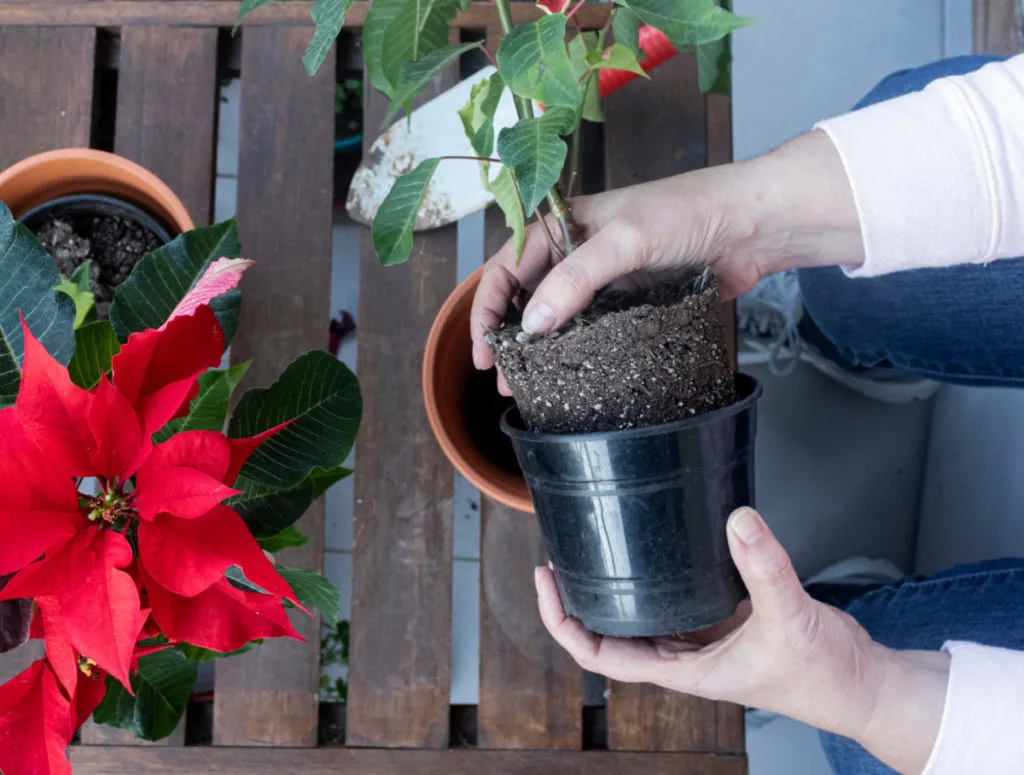
For the rest of spring and summer, you will continue to water your plant regularly, letting it dry out completely between watering. However, you mustn’t let the plant get so dry that it begins to wilt.
You should also begin fertilizing the plant once a month after you’ve repotted it. Choose a good all-purpose houseplant fertilizer.
Going forward, caring for a poinsettia is quite similar to another popular holiday plant – the Christmas cactus.
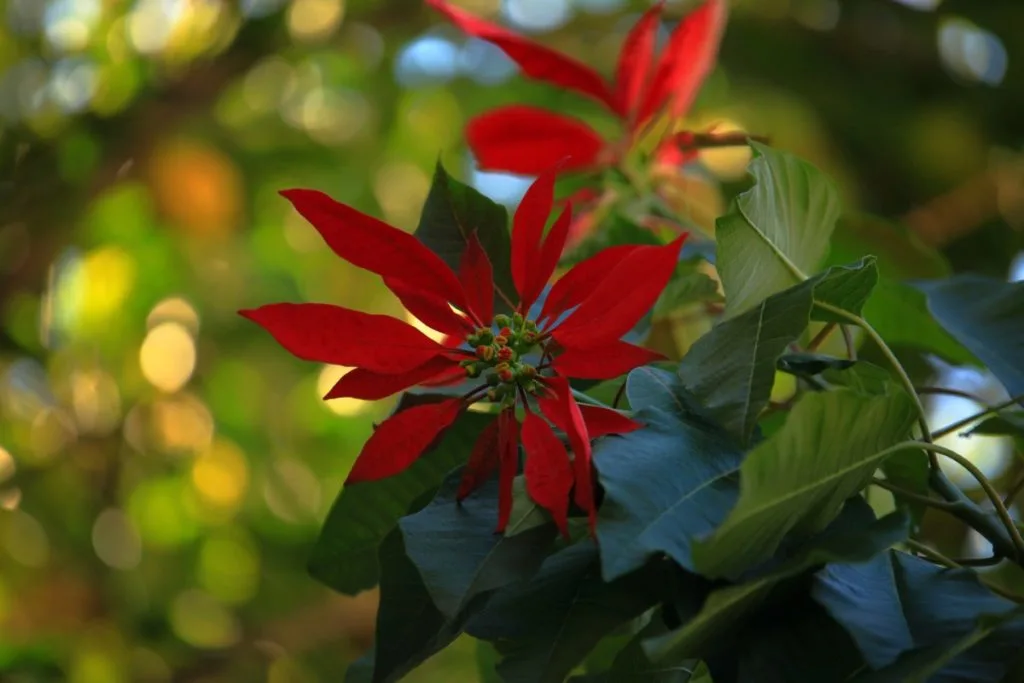
Originally from Mexico, poinsettias prefer a toasty 60-70 degrees F to remain happy and healthy. Poinsettia shouldn’t be exposed to temperatures below 50 degrees F; keep this in mind if you choose to move your plants outside in the warmer weather.
And just like their tropical friends, the Christmas cactus, poinsettias do best in bright, indirect sunlight.
Like most houseplants, poinsettias prefer a humid environment. Use a pebble tray or a plant mister to provide extra moisture for them.
In mid to late summer, you should begin to see new growth on your poinsettia. (Now is the perfect time to propagate your poinsettia!)
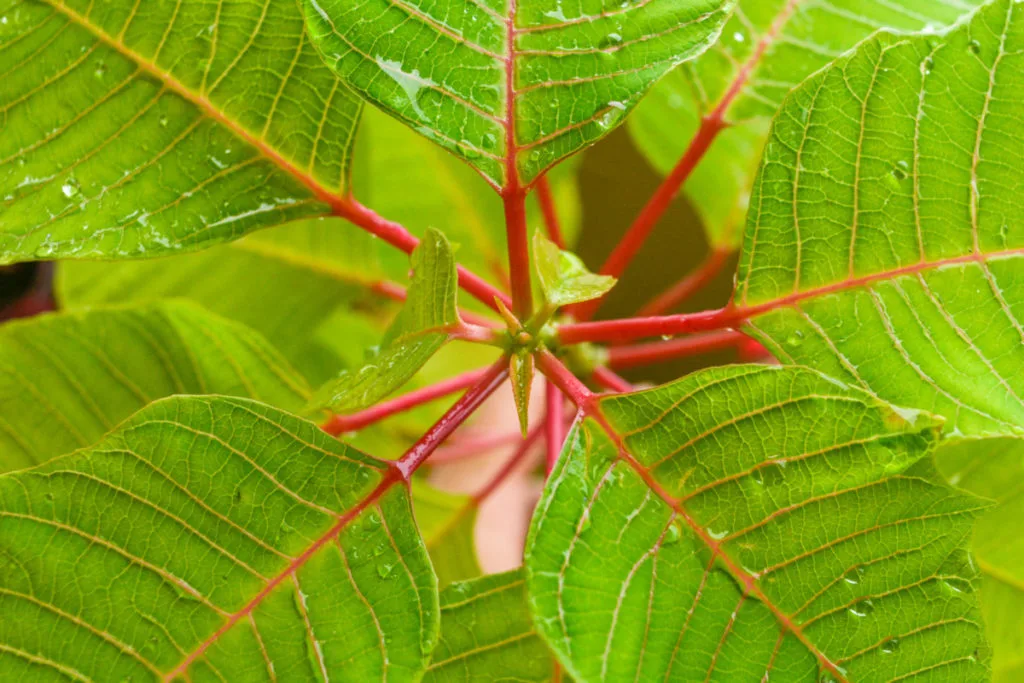
All of the new growth will be green, don’t worry, we’ll get it to turn red just in time for Christmas.
Forcing a Poinsettia to Change Color
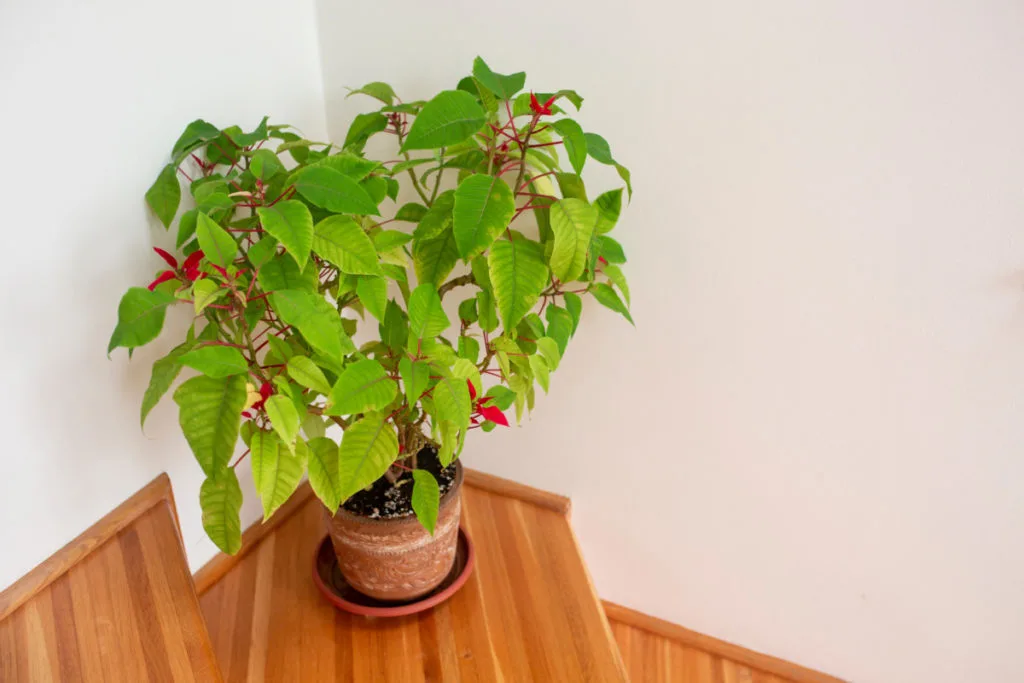
In their natural habitat, poinsettia bracts change color due to the seasonal changes in Central America. However, we can recreate this environment at home.
You’ll want to begin this process about eight weeks before you want the poinsettia to be in color, usually beginning in September.
At this point, stop fertilizing your plant. If you’ve kept the plant outside, be sure to bring it inside long before temperatures fall below 60 at night.
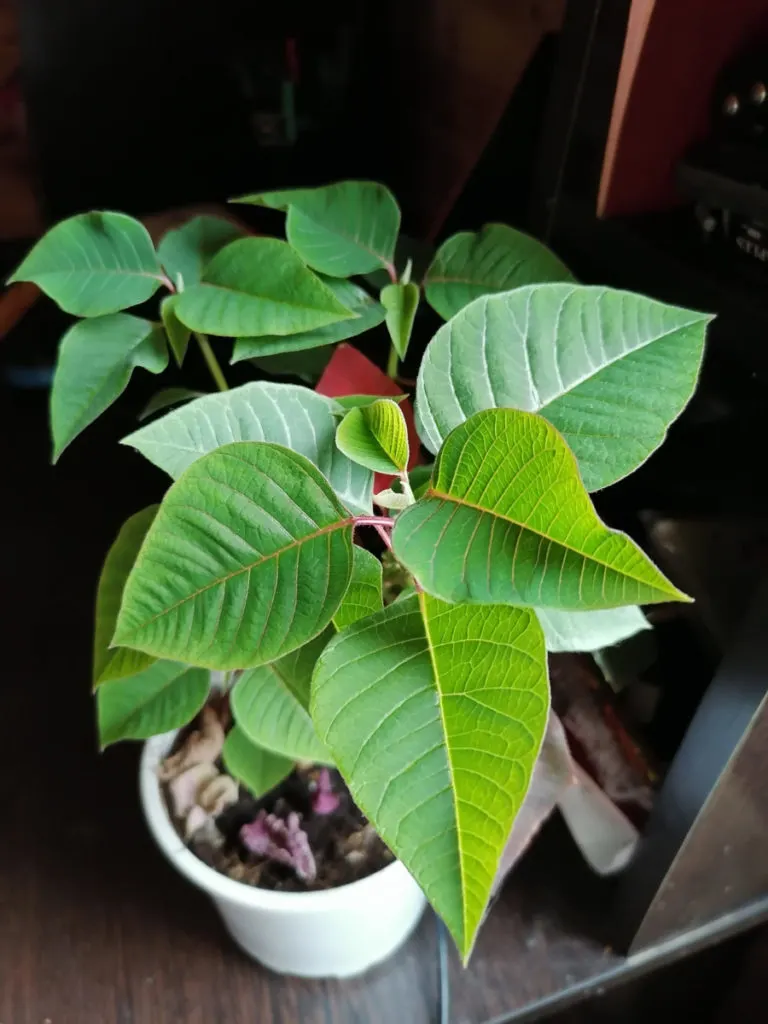
Much like the Christmas cactus bloom cycle, poinsettia bracts will change color if they experience longer nights with bright days.
To mimic this requires a bit of work, but it’s nothing too hard. You’ll need to put your poinsettia somewhere completely dark for 14 hours a day. During the other ten hours, it should be kept someplace that receives bright indirect sunlight.
It’s important that the plant be kept in complete darkness for around 14 hours.
Even small amounts of light, both natural and artificial, can prevent the poinsettia from changing colors. A closet, pantry or windowless room is perfect.
If you don’t have a good spot in your home that’s completely dark, you can use two black trash bags (double-bagged) or a large cardboard box to cover the plant. Cover the plants in the early evening, being careful not to crush the leaves. Remove the cover in the morning for the recommended ten hours of light.
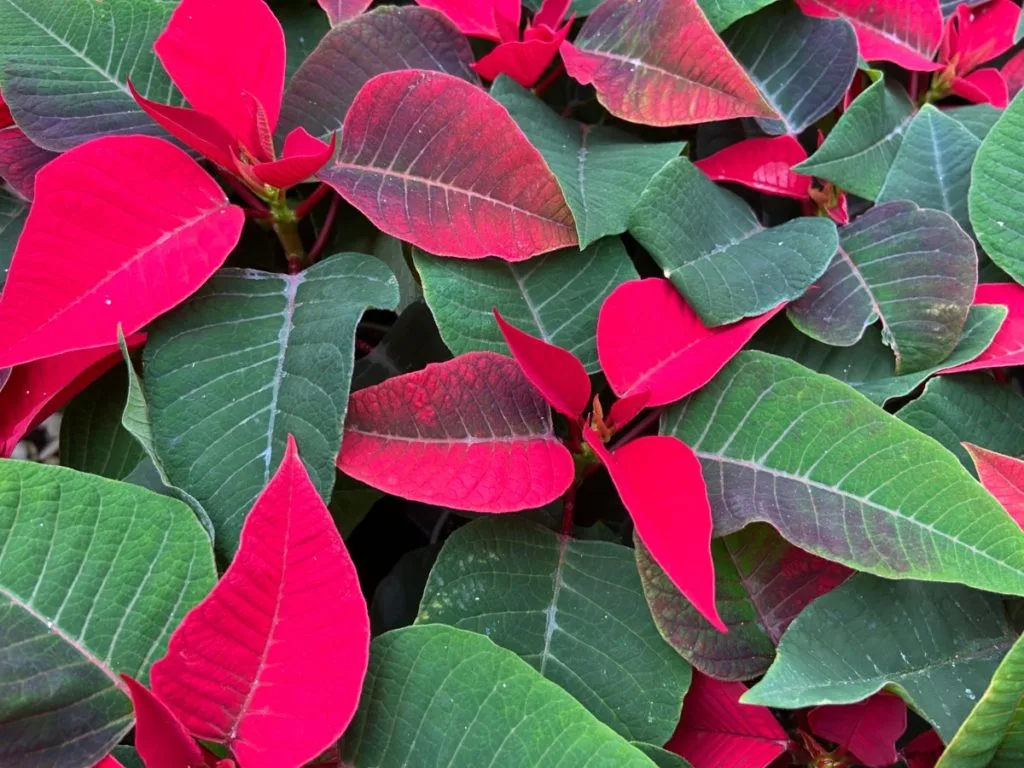
Slightly cooler temperatures of around 60 degrees F will also help to mimic the plant’s natural environment.
The poinsettia will need extra humidity too. A small cool mist humidifier works great, or in a pinch, using a dish of water placed close to the plant. If you were using a plant mister, don’t mist the leaves, or they will develop spots on them.
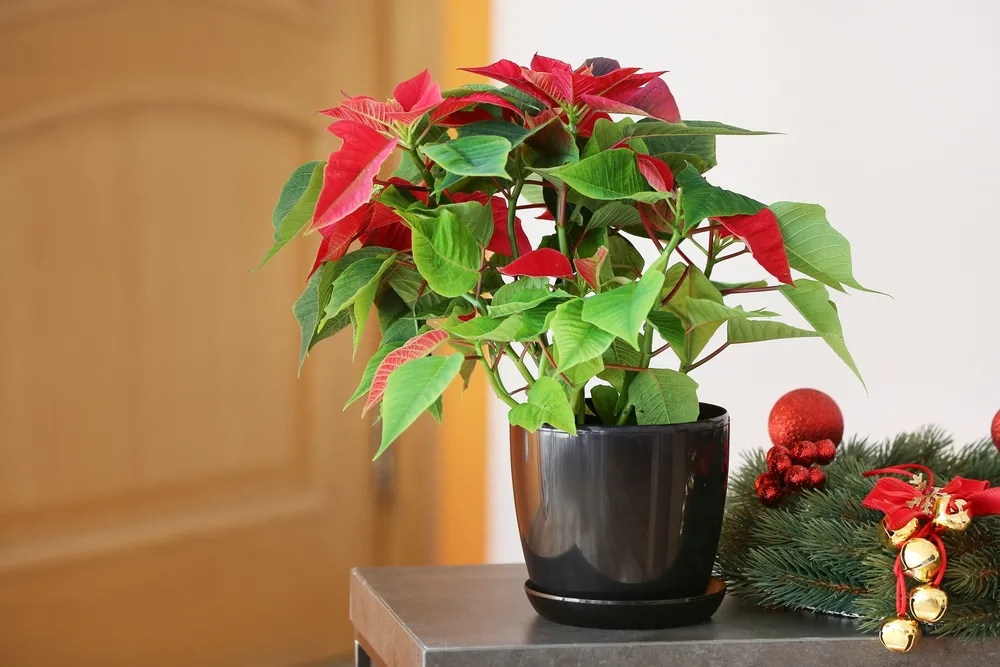
You’ll need to keep up this routine for around 4-5 weeks; however, once the bracts have changed color, you can simply enjoy your poinsettia as you did the previous holiday. Maybe you’ll even enjoy it more because you kept it alive for another year!
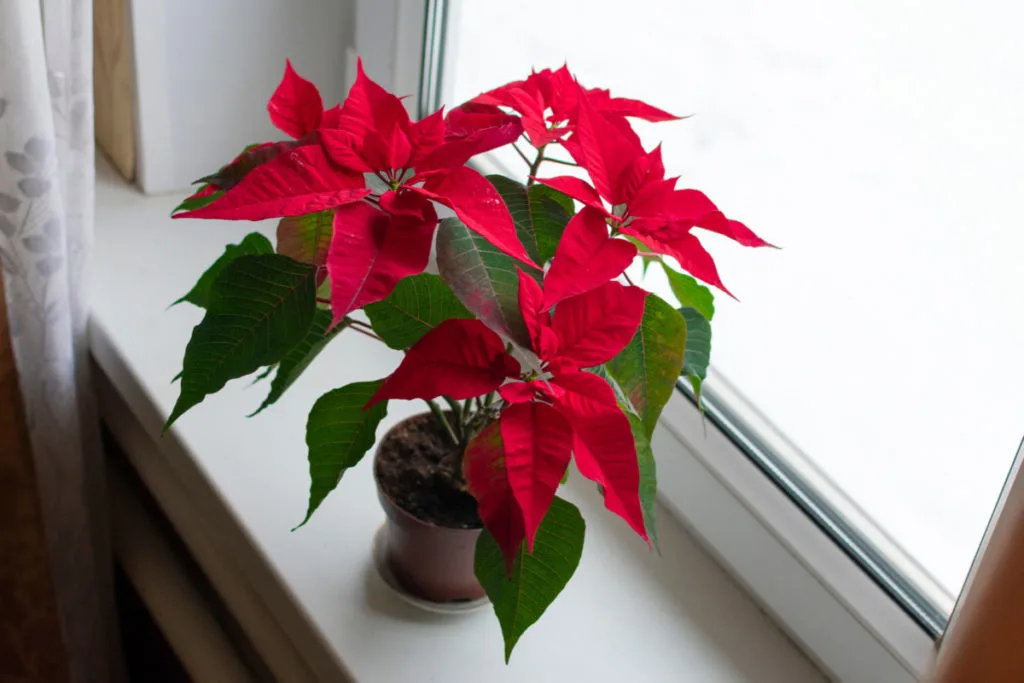
Keeping a poinsettia from year to year is a fun wintertime gardening project for green thumbs everywhere. Every year your poinsettia will get a little bit bigger and a little more impressive.
Yes, it requires a bit of effort, so this project might not be for everyone, but it’s at least worth a try once.
And one more benefit to keeping your poinsettia alive beyond the holidays, is that you can take cuttings from the new growth in spring and grow a few brand new poinsettia plants. Take a look at Tracey’s guide to propagating poinsettia here – and also learn why doing so might be illegal.
Want to learn more about other holiday plants?
Poinsettias & Other Holiday Plants That Are Toxic To Pets (& 3 That Aren’t)
12 Christmas Plants For A Festive Indoor Garden
How to Save Your Amaryllis Bulb To Bloom Again Next Year
Christmas Cactus Care: More Blooms, Propagate & Identify Holiday Cacti

Get the famous Rural Sprout newsletter delivered to your inbox.
Including Sunday ramblings from our editor, Tracey, as well as “What’s Up Wednesday” our roundup of what’s in season and new article updates and alerts.


